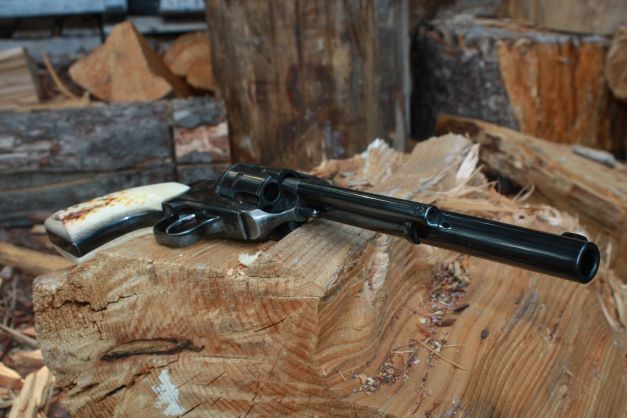
By Dave Workman
Editor-in-Chief
Contrary to the suspicions of some folks, I was not around when the .45 Colt cartridge was first introduced way back in 1873, and the fact it has remained to this date more than 150 years later popular as a more-than-adequate fight-stopper is a testament to its reliability and devastating downrange performance.
When I was a much younger man, I had thoughts of one day owning a “Sheriff’s Model” with 3 ½ -inch barrel without an ejector rod housing, to be used for concealed carry. It launches a 250-grain lead flat point bullet at velocities up to the 900 fps realm, depending upon the propellant, and the gaping hole at the muzzle has been known to discourage bad behavior in miscreants dating back generations.
The Model 1873 Colt Single Action Army revolver with its 7 ½-inch barrel is one of the most recognizable handguns on the planet. My budget has never come near to the necessary “disposable” cash balance to be able to buy one but some years back, along came Ruger with its New Vaquero model which, at least at first, included a long-barreled option in addition to the shorter barreled models now available. I snatched one up and have never regretted it.
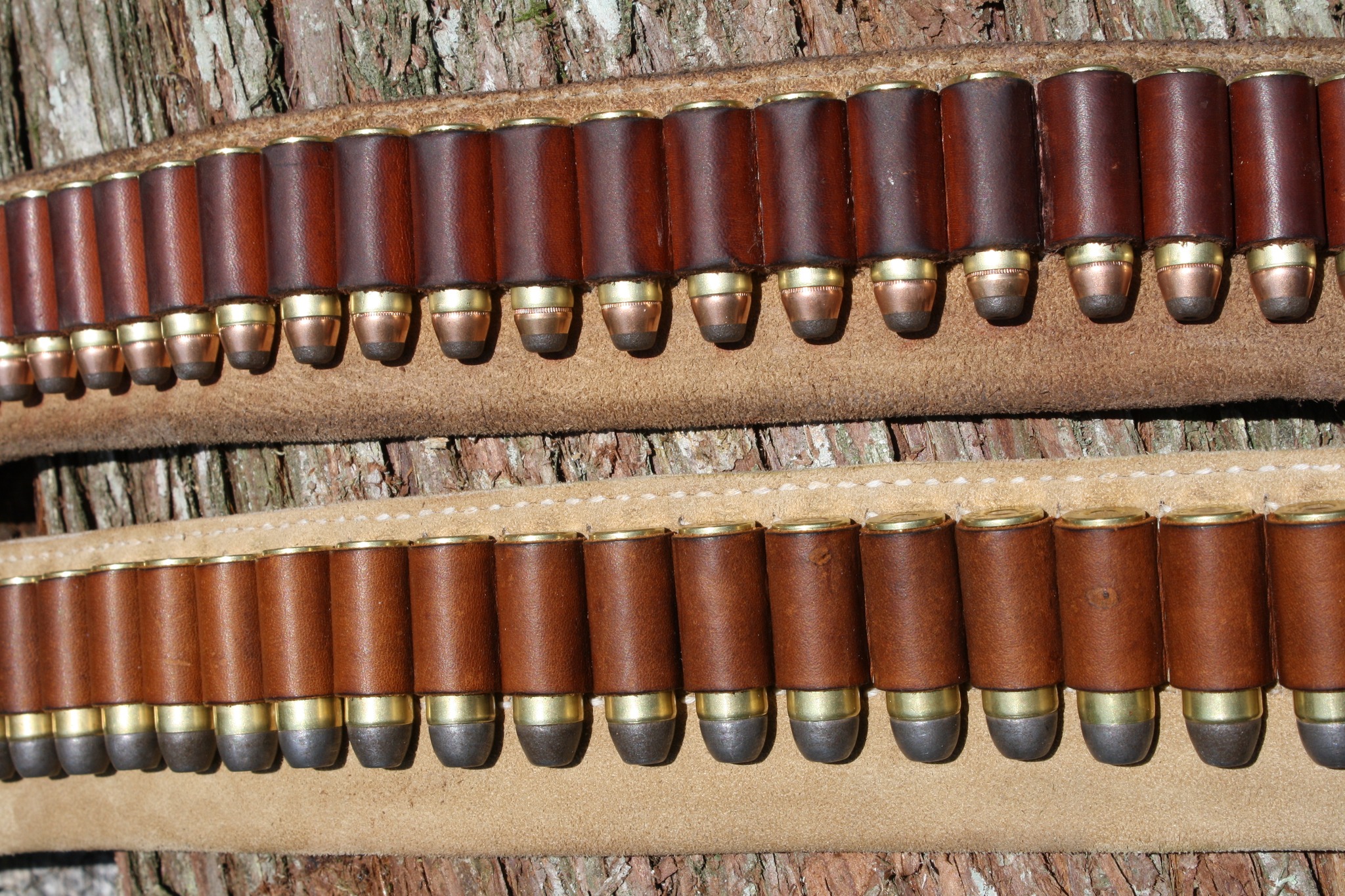
In the New Vaquero, one can carry all six chambers loaded, and when I’m packing the big sixgun away from the pavement, I keep them all filled.
I consulted several reloading manuals and, after acquiring plenty of brass and a couple of different propellant choices, I bought a couple of boxes of Hornady’s 255-grain RNLFP “Cowboy” bullets, along with some Hornady 250-grain XTP jacketed hollow points and started tinkering at the loading bench.
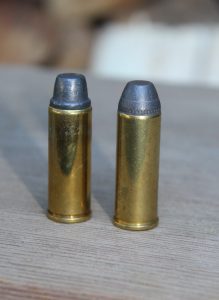
Happily, I’ve been able to push the lead pills out ahead of 6.9 grains of HP38 from Hodgdon accurately at velocities above 850 fps, which is plenty of horsepower to accomplish most anything with a handgun. This is the maximum charge of HP38 recommended in the Hornady manual, and it delivers the goods when ignited with either a CCI or Winchester large pistol primer. Approach all maximum loads with caution, however, and never exceed a recommended charge listed in your loading manual.
For loads using the 250-grain Hornady XTP, I’ve had good results with both CFE Pistol and AutoComp, and there are some good load recommendations in the Hodgdon Annual Manual. One gets a little better velocity with the CFE Pistol, and be prepared to lose velocity if shooting loads with either of these propellants out of a shorter-barrel revolver.
I recently resized and trimmed a mixed batch of once-fired brass (Winchester, Starline, Hornady and Remington), with the trim length set back to 1.275-inch. You will want to pay close attention to chamber pressures listed in your loading manual, as the .45 Colt maxes at 14,000 psi.
Being an advocate of big, slow-moving bullets, I can easily declare without fear of contradiction that five or six rounds out of a .45 Colt-caliber handgun is going to get everyone’s attention! In my lifetime, I’ve known, or known of, people who killed black bears, deer, coyotes and other things with handguns chambered in .45 Colt, and a tour of any late 19th Century cemetery from Miles City to Tombstone will put you in close proximity to the final resting places of hombres who were on the wrong end of the gun.
I built a set of walnut grips for my sixgun and then acquired a pair of elk antler panels from my pal Raj Singh at Eagle Grips. Having put hundreds of rounds downrange with both sets of grips, I can’t say I’ve preferred one over the other.
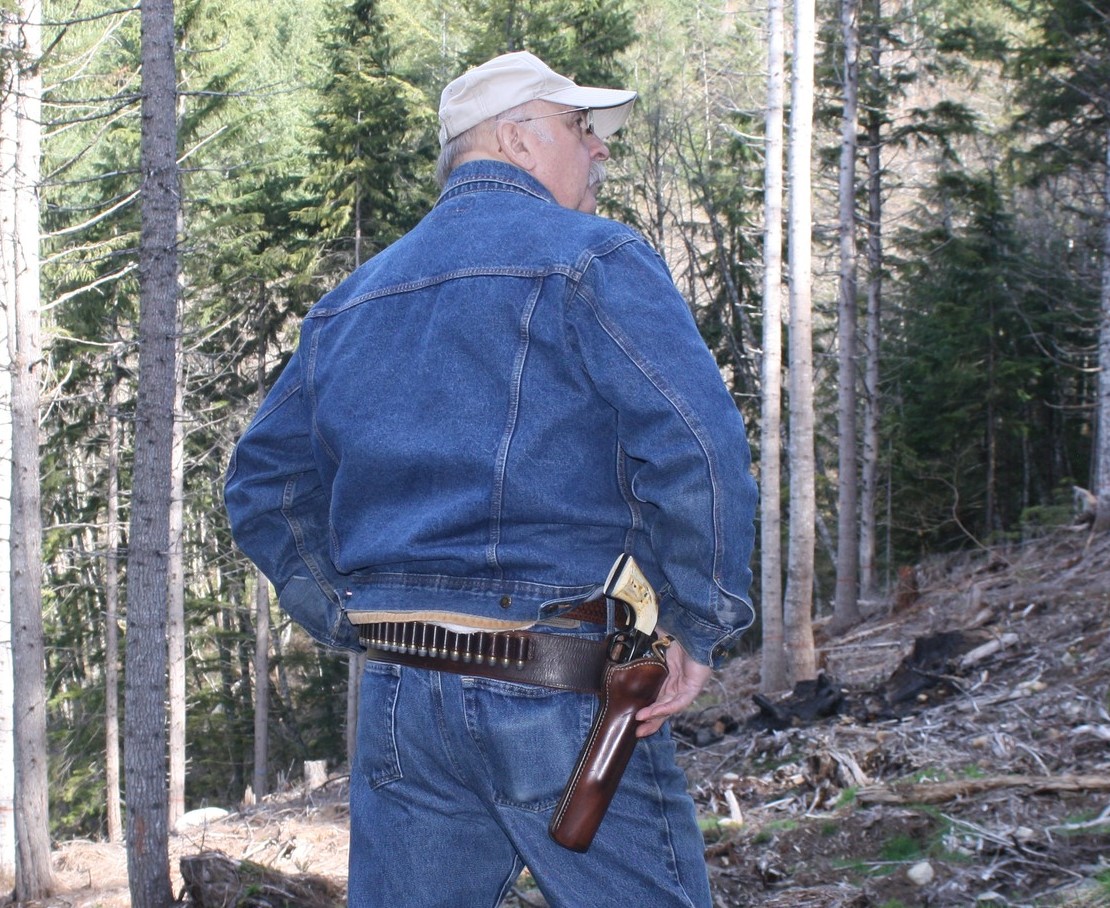
The great thing about the .45 Colt is that it has been around long enough for a lot of different bullet weights and designs to have been developed. One can beef up handloads for use in Ruger revolvers on the Blackhawk or Redhawk frame, or in the Thompson/Center single-shot pistols and models from Freedom Arms, but you do not want to use such loads in Colt, Ruger New Vaquero or other standard frame wheelguns because of the chamber pressure. Every loading manual I’ve ever examined makes specific note of this power disparity, so pay attention and don’t get creative.
A few years after buying my 7 ½-inch New Vaquero, I bought another one with a 4 5/8-inch barrel, and frequently carry this in late summer while grouse hunting. It is fast, accurate and comfortable to shoot, with either a set of Arizona Custom grips in Magna Tusk—a rugged synthetic which can be treated to look like aged ivory—or a set of Eagle’s elk antler grips.
One thing I noted early on with both New Vaquero revolvers is that they are reliably accurate with traditional fixed sights, a blade up front and square notch at the rear of the frame. I only had to touch up the front sight a little bit with a fine file and diamond stone (be sure to re-blue). I can manage to hit tin cans consistently out to 25 yards with either gun, and I suspect back in the Old West, many a cowpoke learned to handle his own hogleg in the same manner.
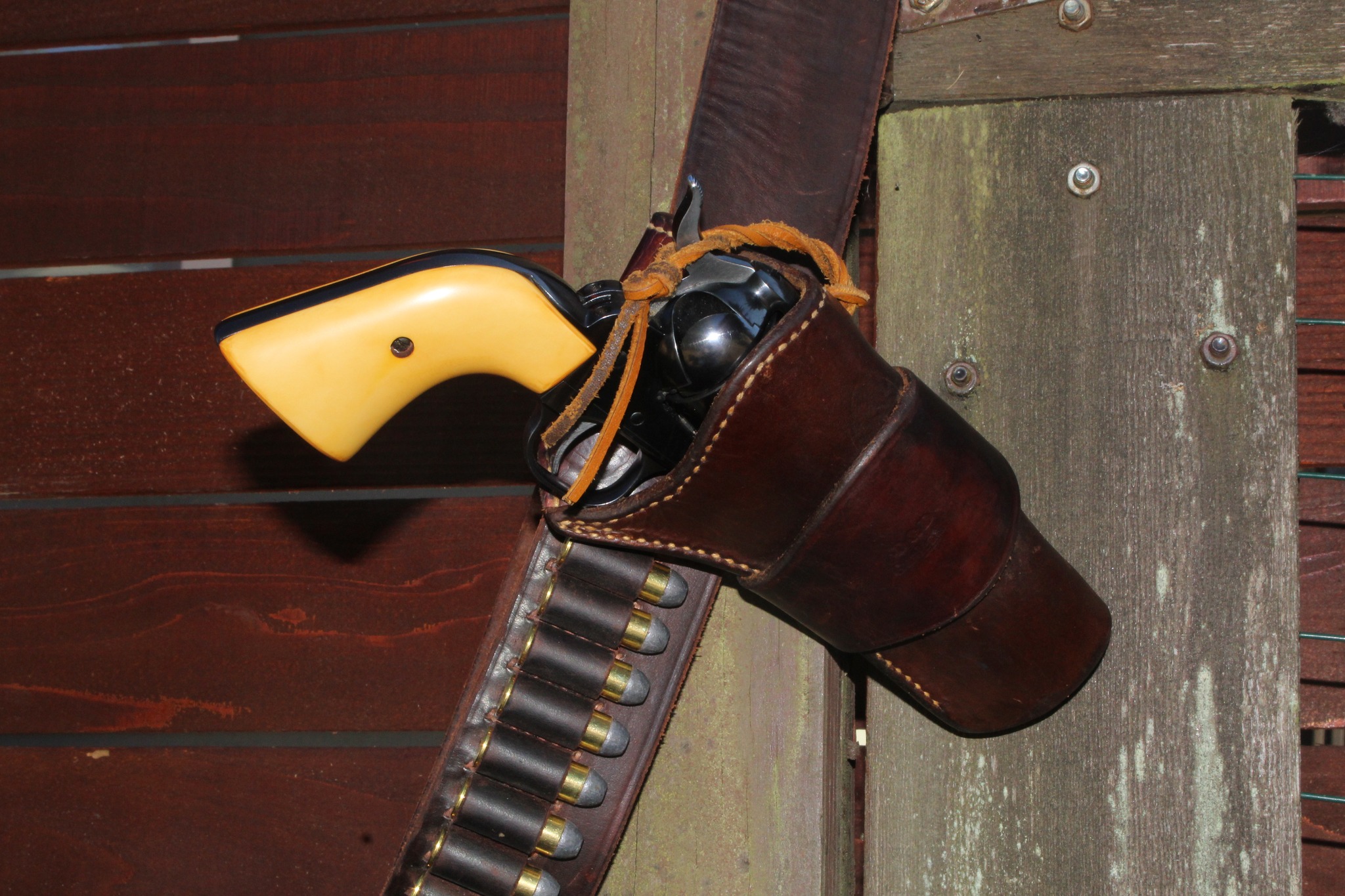
I think it is not just the effectiveness of the .45 Colt which has perpetuated its popularity over the years, but also a sense of nostalgia among its faithful fans. There must be a certain romance with the cartridge; a sense of connection with a long-gone era when in many parts of the Old West, the closest thing to law and order was carried in a holster one one’s belt. In those days, you didn’t dial 9-1-1 and wait for the police or the Cavalry to arrive, and not even the Texas Rangers could ride up and save the day “in the nick of time.”
The .45 Colt is, in my humble opinion, a superb cartridge for any practical endeavor. Sure, it’s not a fire-breathing magnum, nor does it deliver the recoil of the .41 or .44 magnums. But it fills a pretty wide niche and that’s why I’m never uncomfortable having one around camp or on the trail.



